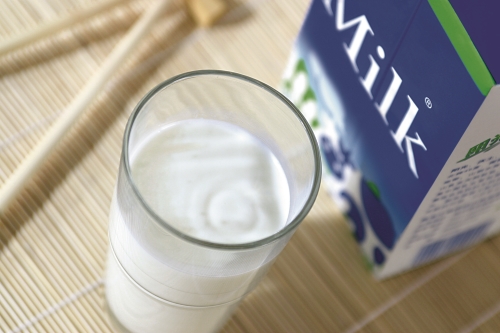Asia’s rising population and consumers’ quest for safe milk and dairy products are propelling the growth of milk exports from Europe.
This also leads to quality packaging that help dairy products meet safety standards.
“For our European dairy customers, the number of ultra high temperature (UHT) milk products in our carton packs that are headed for the Asian market has increased six-fold since 2011”, says Matthias Krusche, global market segment manager at SIG Combibloc.
In China for example, people are prepared to pay handsomely for dairy products from Europe, says the company.
This is attracting large dairy groups, with their increasingly global focus, to grow their businesses in Asia, as well as Africa and the Middle East.
The company says the abolition of the European milk quota system in 2015 will also strongly affect market conditions.
Due to a European Union decision, from 2015 farmers in Europe will be free to produce milk without any limits.
While Europe’s demand for milk has matured – additional quantities will not necessarily be needed, and do not automatically promise extra profits, Asia is giving a different picture.
With a growing population, rising incomes and changing dietary habits, which increasingly are taking on Western traits, the popularity of healthy, high-quality milk products is increasing – especially products that can be shown to come from Europe.
Similar consumption and market trends are being observed in some parts of Africa.
“For Asian consumers, product safety plays a significant role in the selection of food. Separately from the product itself, food packaging too, with its protective characteristics, is increasingly moving into the public focus,” says Krusche.
1L packaging format appeal
Germany is one of the world’s biggest exporters of dairy products.
According to recent surveys, currently almost every other litre of milk products in Germany is exported.
Deutsches Milchkontor (DMK) for example generates 38% of its annual turnover through export business to more than 100 countries world-wide.
DMK exports a variety of different products in its portfolio to China – UHT dairy products mainly in 1-litre aseptic carton packs, on which the origin of the products is explicitly stated in the package design, with labels such as ‘High Quality – Made in Germany’.
“The consumer group of heavy milk users in Asia is on the rise, not only adapting the western-styled diets but also the choice of packaging,” Krusche tells Food News International.
“Traditionally, Asian producers have been focusing on small sized dairy packages, answering to key consumer and market requirements such as on-the-go consumption.”
“With their one liter packaging format, European producers are thus serving a new consumption trend. “
By contrast, dairy companies in Asia offer dairy products almost exclusively in small-format packaging.
It is noted, however, that dairy products from Europe are consumed primarily by families with children – and in substantial quantities.
“European consumers are heavy users with regard to high quality dairy products. For example, convenient packaged milk products are present at every breakfast table being used for the daily coffee or a bowl of cereal. In Europe, the most suitable carton package comes in the one liter format,” says Krusche.
Export-friendly features of UHT packages
For dairy company Arla Foods, its products are sold in more than 100 countries.
“When the EU’s milk quota system is abolished in 2015, our dairy farmers will produce an estimated one billion kilograms more milk than they do today,” says Tim Orting Jorgensen, executive VP, Consumer Germany and Netherlands.
“This quantity can be sold in countries outside the EU. We’ve invested in particular in Russia, China, the Middle East and Africa, as in those places the economies are growing and there is a big market for dairy products.”
“Our medium-term goal is to double the pro rata share of our export sales by 2017, from 10% to 20% of total turnover.”
“The gentle UHT process, and filling the products in aseptic carton packs, ensures that our milk heads out to consumers in the best quality, and can be kept for long periods even without refrigeration. Carton packs protect our products and keep them safe.”
“They’re also unbreakable, sturdy and they stack well – these advantages save on logistics costs. For that reason, they’re also perfect for export sales”.
‘Made in Germany’ product positioning
The carton pack’s display help draw the attention of Asian consumers to the quality of the milk products.
For instance, ‘Made in Germany’ is printed on the carton packs of UHT milk products which German dairy group Hochwald sends to Asia – beside an eye-catching German flag, and this is paying off in the Asian retail market.
“Quality milk products from Germany are very highly valued in Asia”, says Dr. Karl-Heinz Engel, chairman of the board.
Exports have been an important mainstay for the company for many years and are continuously being expanded.
In Asia, in addition to the sales of one litre packaging, the company is experiencing an increased demand for milk products such as long-life milk, milk-based drinks and cream in smaller packaging units, for example 0.20L.
The company is increasing its activities in the region, for example with the expansion of the product portfolio and new sales and production branches.
Outlook
Krusche anticipates that in particular the large, global dairy groups will step up their presence with their own outlet stores in Asia’s major cities, in order to bring the sought-after milk products from Europe straight to the end consumers.
“Dairy producer Sodiaal now has ‘Candia’ stores in various key cities, where people can go to buy the popular French Candia-brand products,” he says.
“We believe other players from Europe will move in with similar shops, and other sales channels such as online shops”.
While most European dairy exporters operate in Asia through distributors or joint ventures, Krusche tells Food News International that they may “step-up their presence in today’s export markets to be closer to the end consumer”.
“This is true not only for Asian regions but also growth regions such as Africa and the Middle East.”











